Conservation Workshop: (Not) Varnishing Thabang Lehobye's Mgusha
Date posted: 15 March 2022
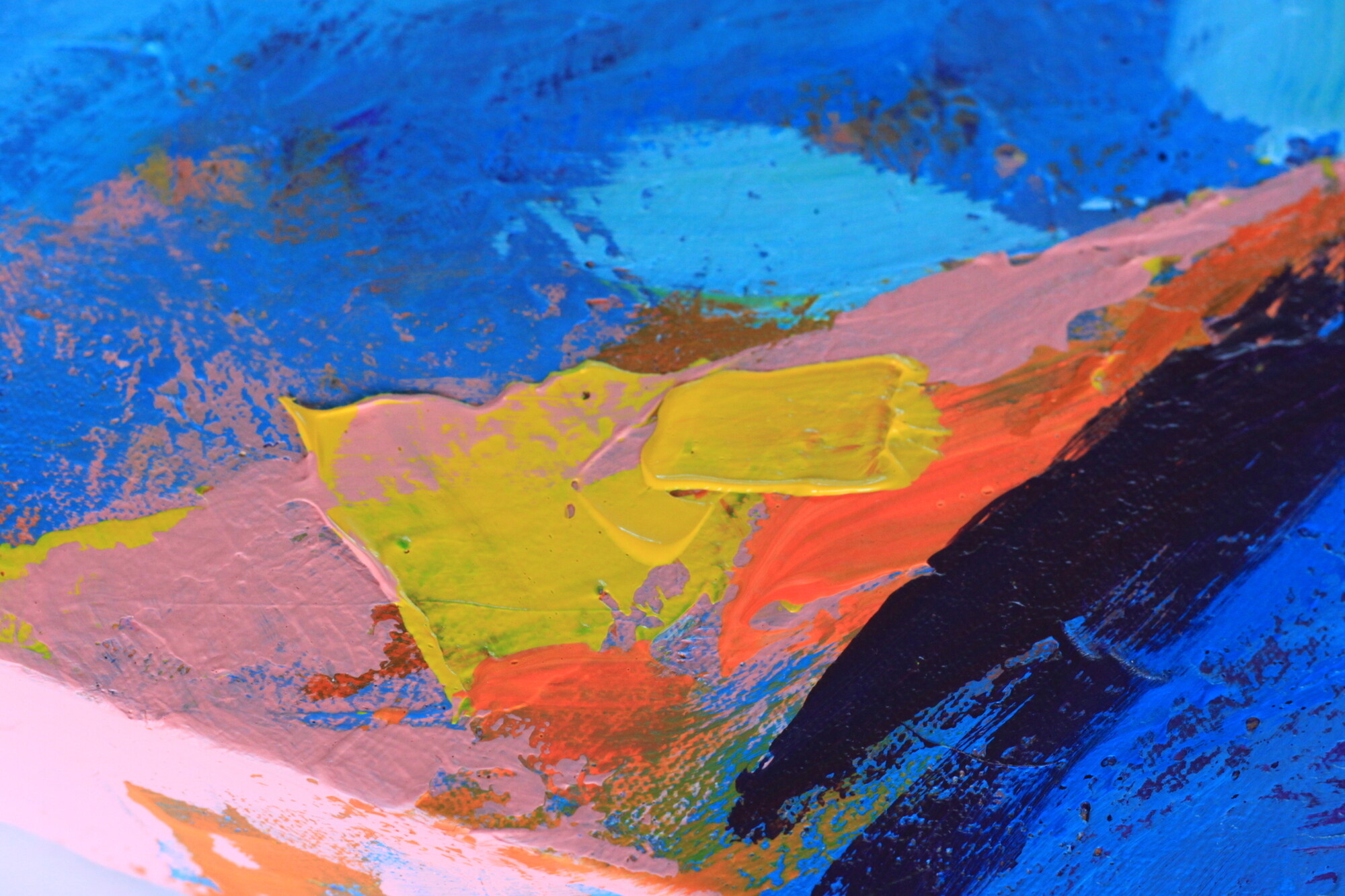
Detail of Thabang Lehobye's Mgusha, acrylic paint and string on canvas, 2020. Photographs by Kay-Leigh Fisher.
Paintings are varnished to protect the surface from dust and dirt, and to preserve the artwork for future generations. Fine Art painting conservator Lucy Blumenthal conducted a short varnishing workshop with the CCAC curatorial team in February 2022, testing mediums suitable for varnishing to conscientise artists about the importance of stabilising artworks and preventing damage while retaining the maximum amount of the original material. Thabang Lehobye’s Mgusha (2020), donated by the artist to the Constitutional Court Trust in 2020, is a diptych acrylic on canvas painting depicting two young girls playing a children's game.
Before the artwork could be varnished, a year had to pass to ensure that the mediums used had dried up entirely, as per Lucy’s advice. The curatorial team used tyvek to store the work and to prevent dust from setting on the painting's surface as that would require conservation treatment cleaning before the artwork could be varnished.
Apparatus Used:
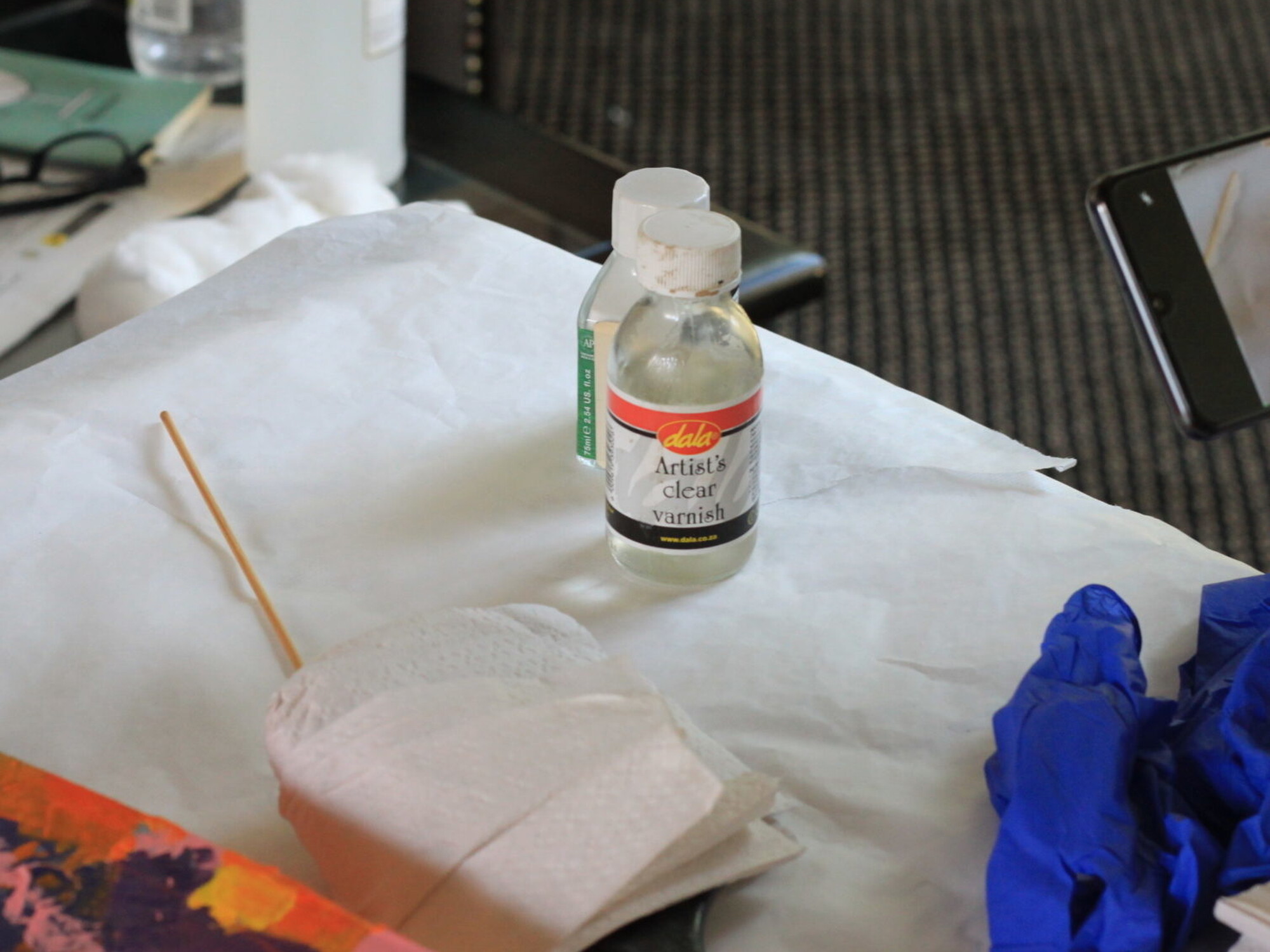
For testing:
- Cotton swab
- Turpentine
For varnishing:
- Chemistry beaker
- Pot and hotplate to warm the varnish inside the beaker
- Flat hog-hair painting brush
- Varnish
- Nitrile Powder Free Gloves
- Paper towels for cleaning and removing excess varnish
.
.
.
Testing the Surface
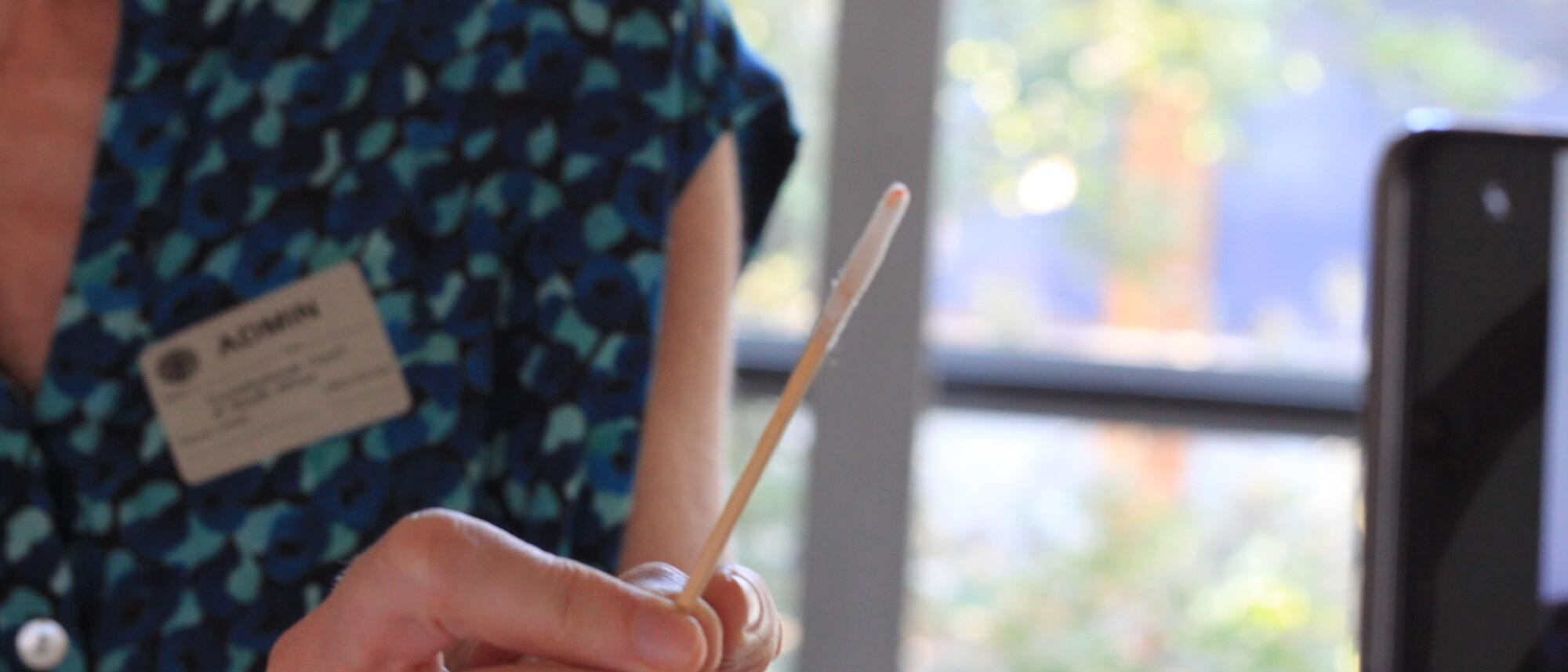
Upon close inspection of the mediums and in consultation with the artist, it was found that purple and red wax pastels were used on the surface of the painting. Lucy used a cotton swab dipped in turpentine to start the inspection process and to confirm whether the artwork's wax pastel lines could be easily removed.
In this case, the swab lifted the colour of the wax pastel lines from the painting. It was thus concluded that the paintings could not be varnished as the process of varnishing, and the possible future-need to remove the varnish for conservation, would remove specific details created by the wax pastels, like the lines on the work or the artist’s signature. Lucy noted that it is important for artists to clarify the mediums in their work for the benefit of the care of their artworks. Mgusha was labelled as a mixed media painting and through consultation with the artist it was confirmed to be an acrylic painting. Conservators advise that acrylic paintings should not be varnished as the varnishes contain similar solubilities as those of acrylic paints. Removing the varnish would require the use of solvents which could cause damage to the paint layer.
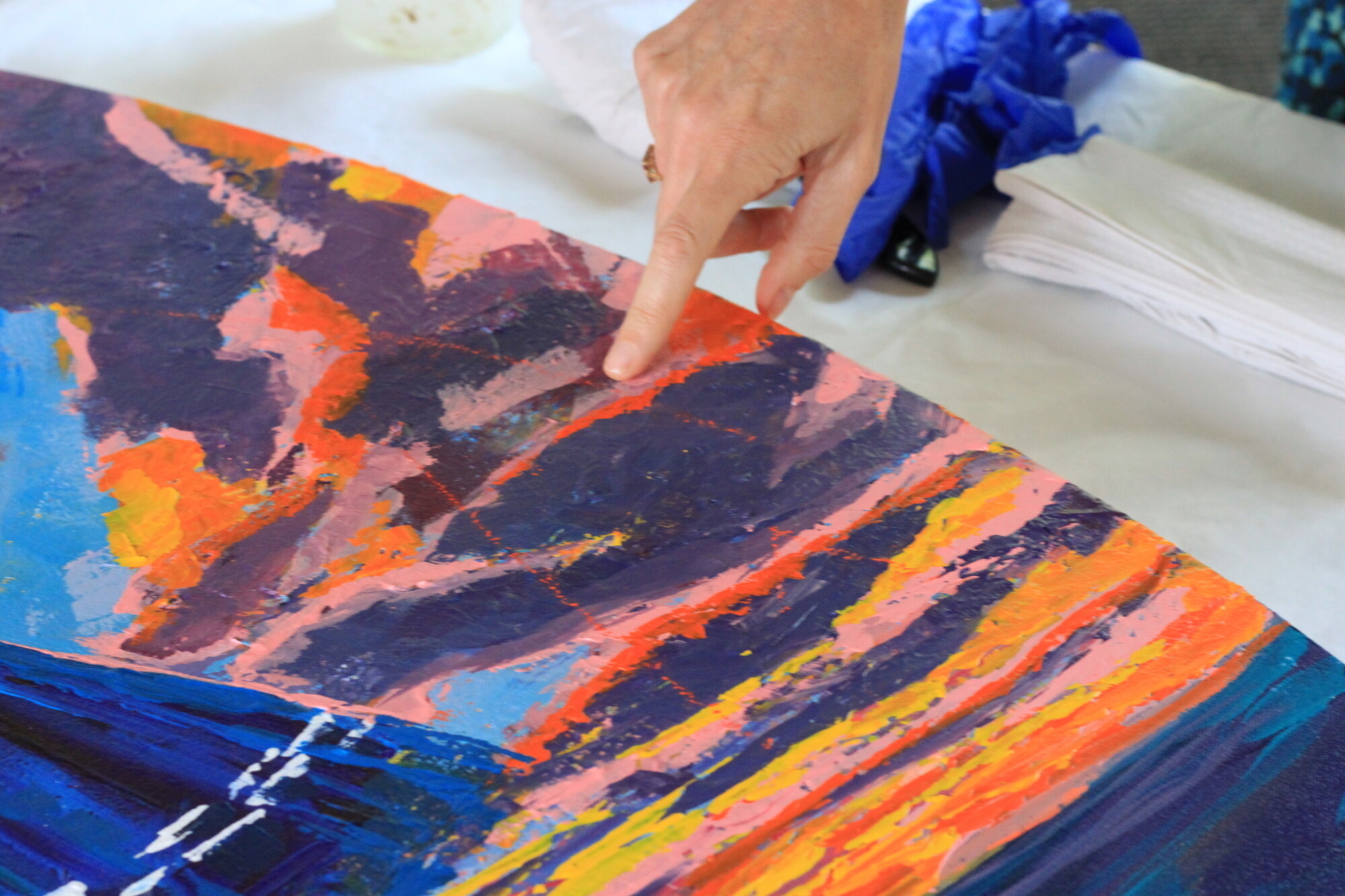
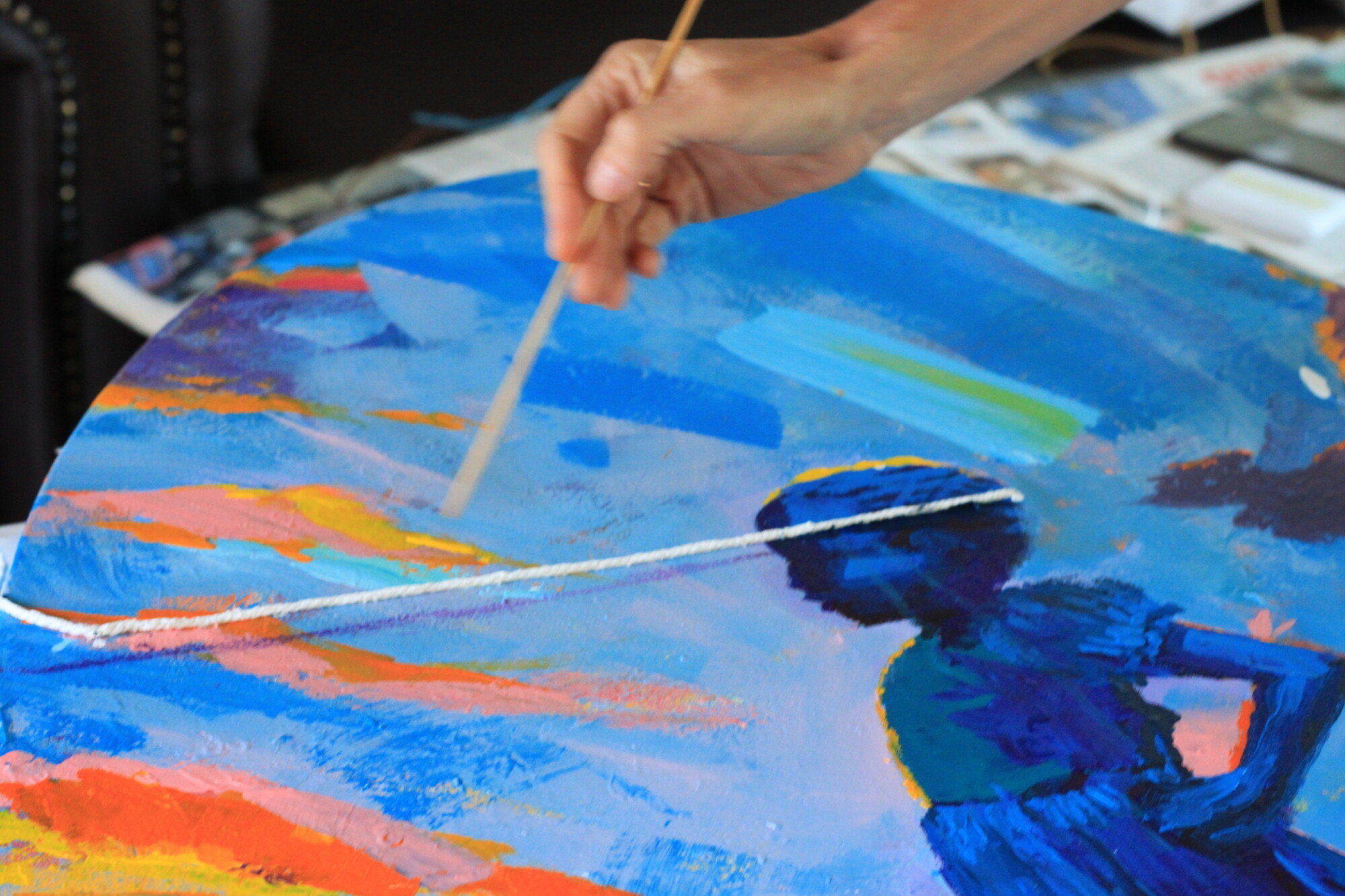
Varnishing Demonstration
Artists must use nitrile gloves to protect the artworks from sweat and natural oils found in hand lotions.
Lucy continued to demonstrate how artists can varnish an artwork for preservation purposes, in consultation with a conservator. Many types of varnishes can be used to achieve different results. Varnishes can be either matt or glossy, depending on the artist’s intent for the finish of the artwork. Artist’s clear varnish from Dala is an affordable option for oil paintings and is easily accessible online or from general art supply stores. Varnishes are also removable, making them most suitable for future conservation treatments and possible re-varnishing of the work.
The varnish is poured into a chemistry beaker and warmed in a pot filled with water. A wide, stiff bristle hog-hair brush is used as it covers a wide area and distributes the varnish quickly and easily. The beaker allows the brush to be fully dipped into the warmed varnish, and the excess is squeezed off on the rim.
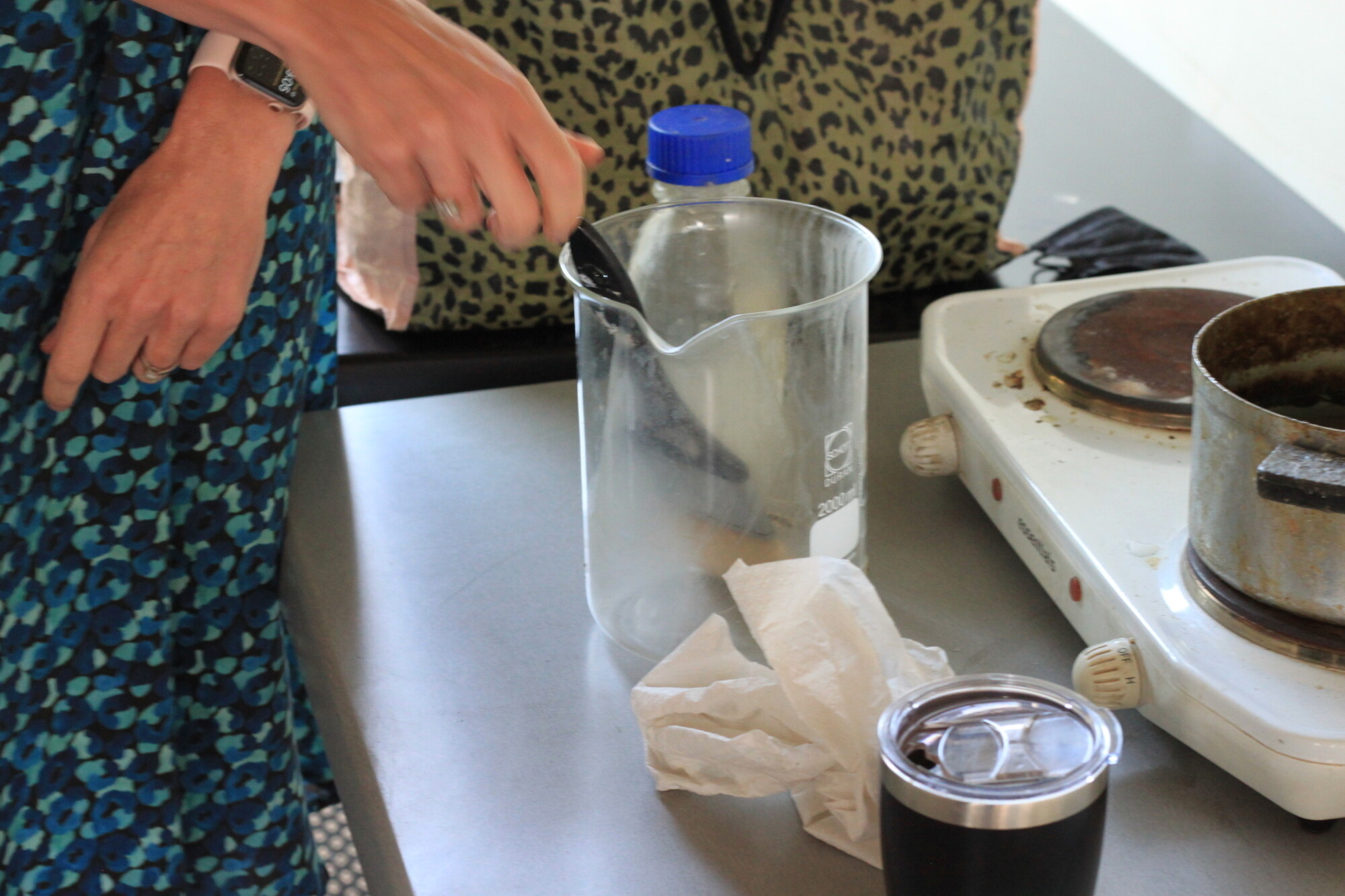
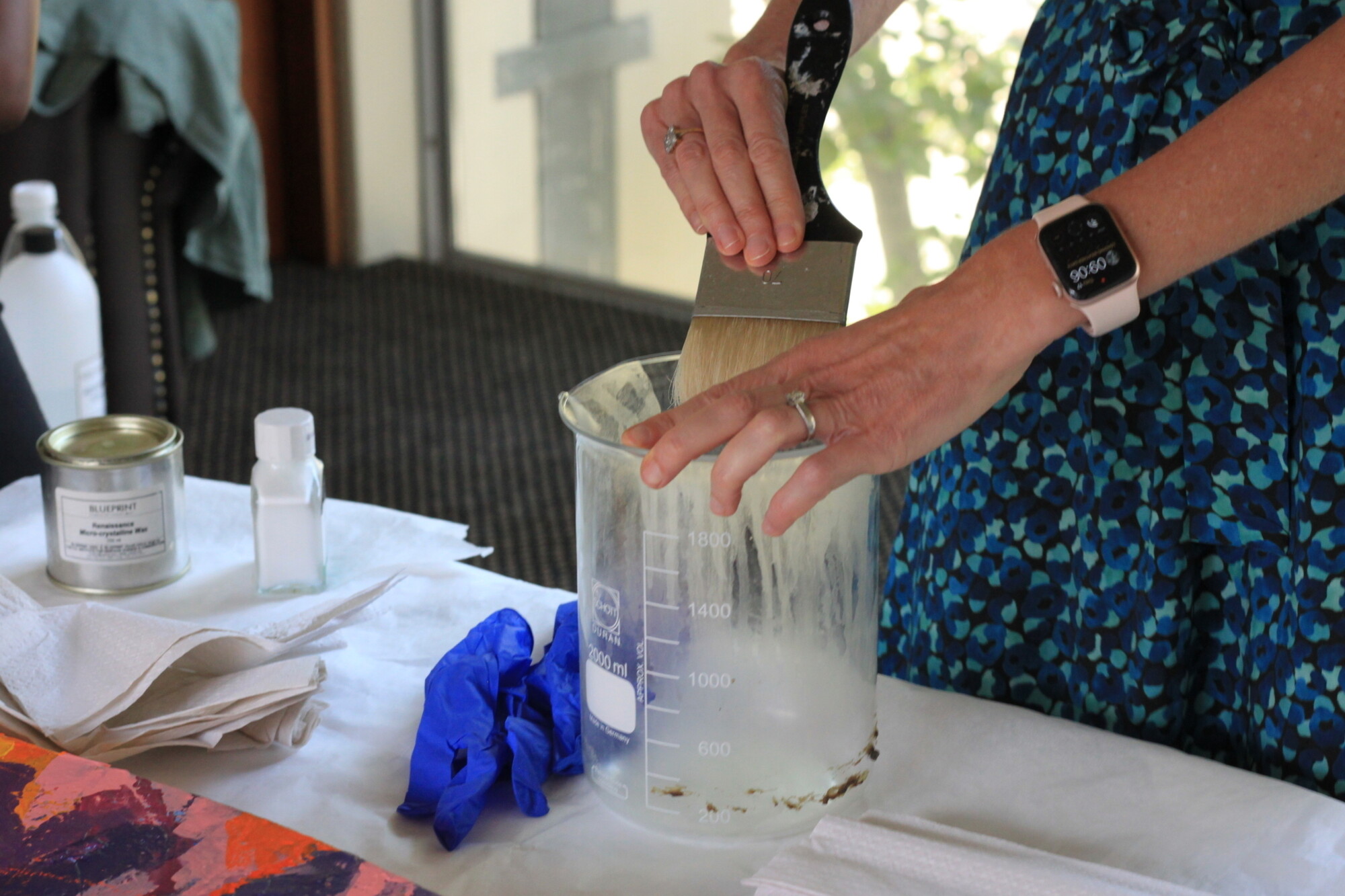
When varnishing, paint a line across the artwork and then begin spreading it around from that point. Remember to work quickly while the varnish is still warm and fluid. Working slowly would cause the varnish to dry as you’re working and create uneven layering.
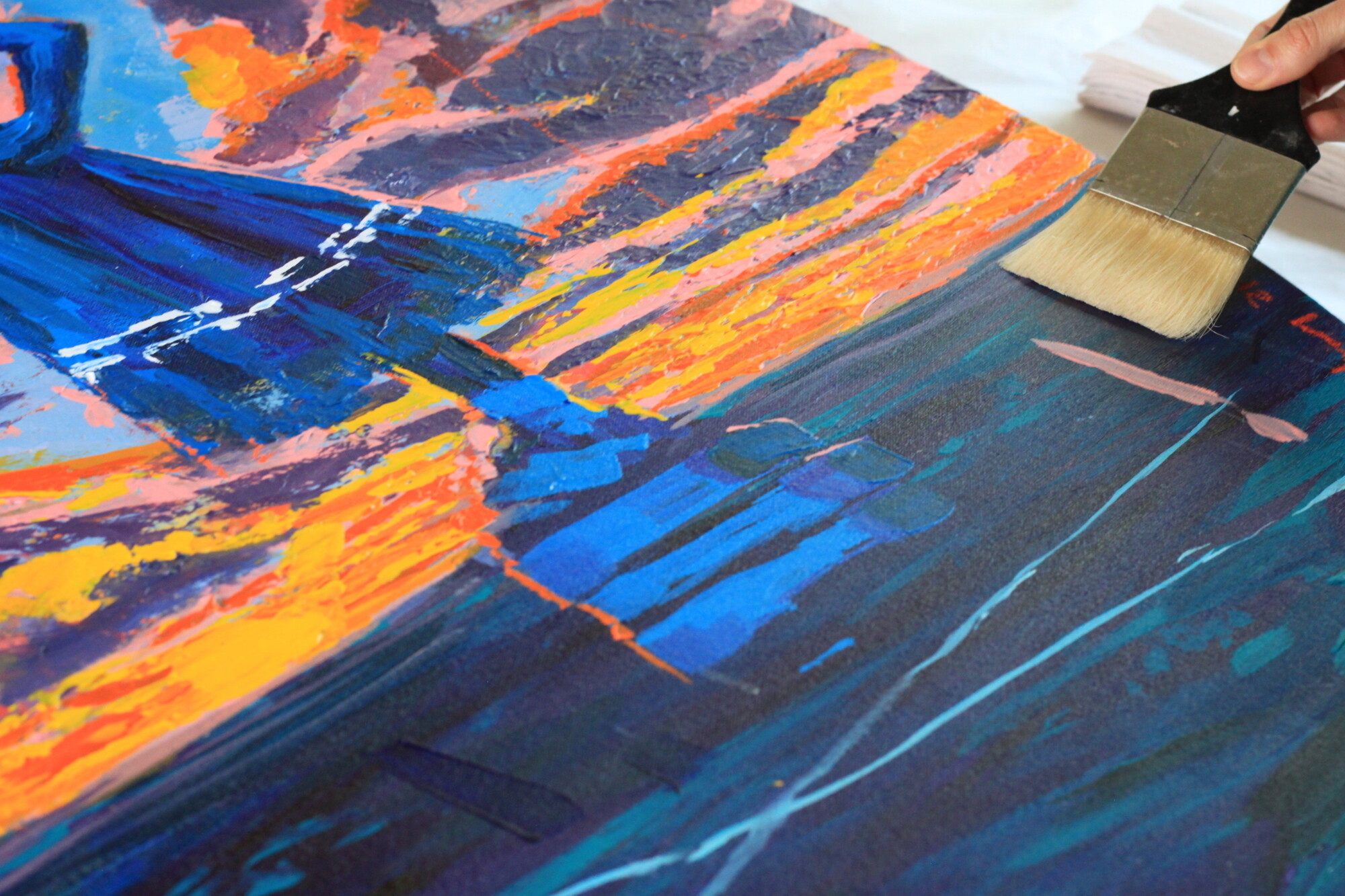
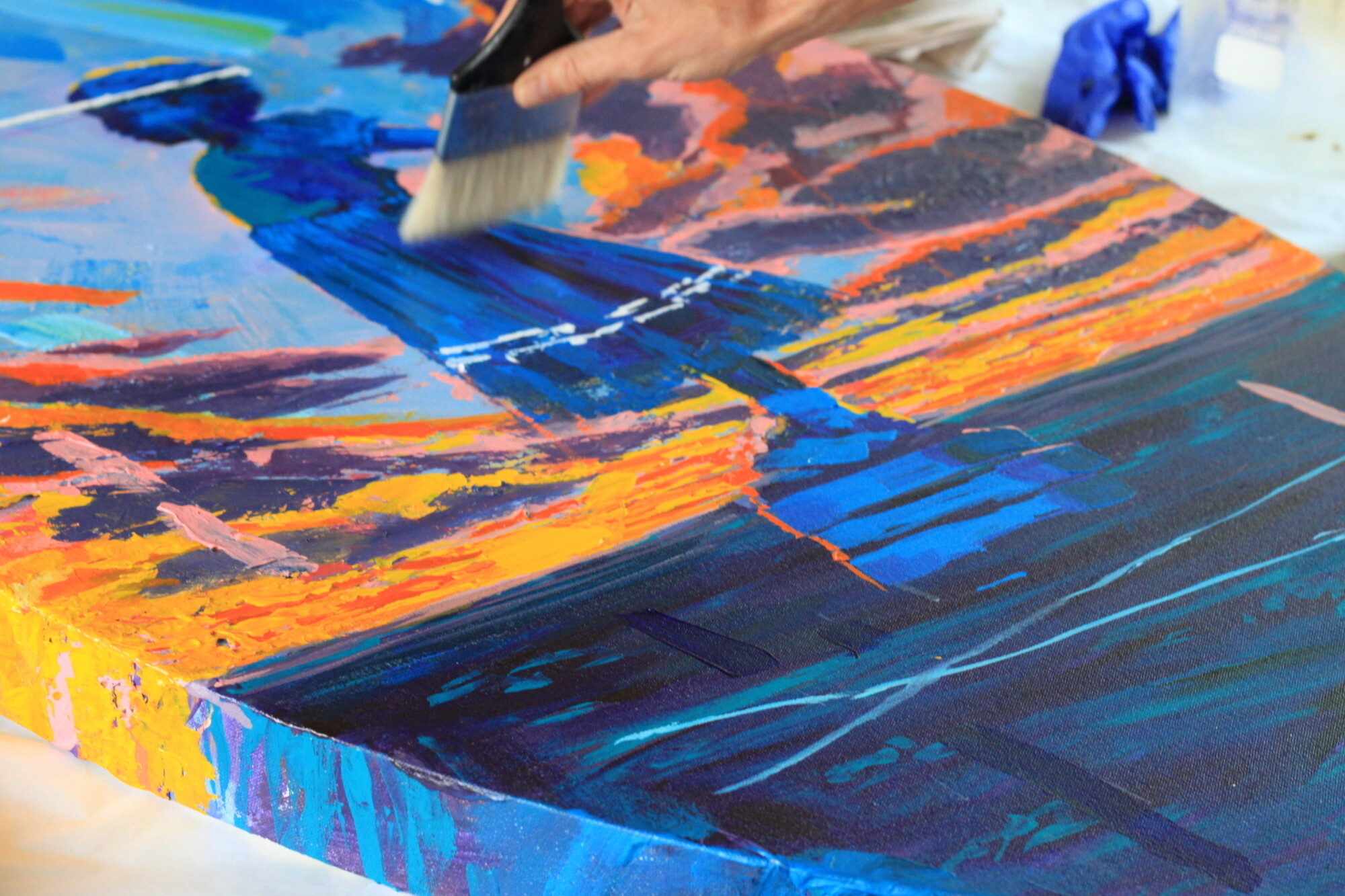
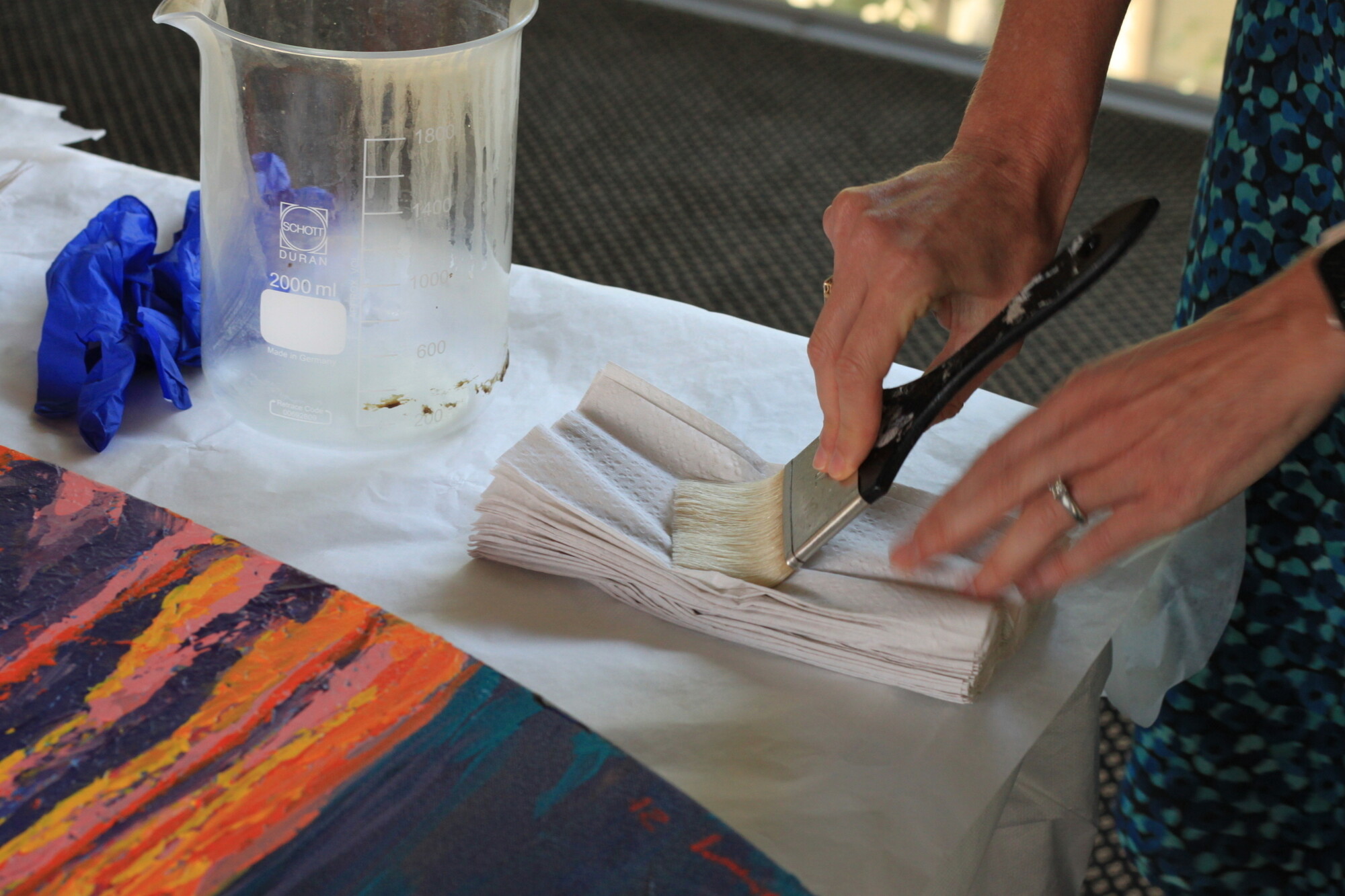
Once the varnishing process is complete, the brush should be dabbed onto clean paper towels to remove the excess varnish before the brush can be thoroughly cleaned.
The varnished artwork should be left to dry in a dust-free environment for 24-48 hours.
Conservation Advocacy
Thank you to Lucy for conducting this varnishing workshop for us.
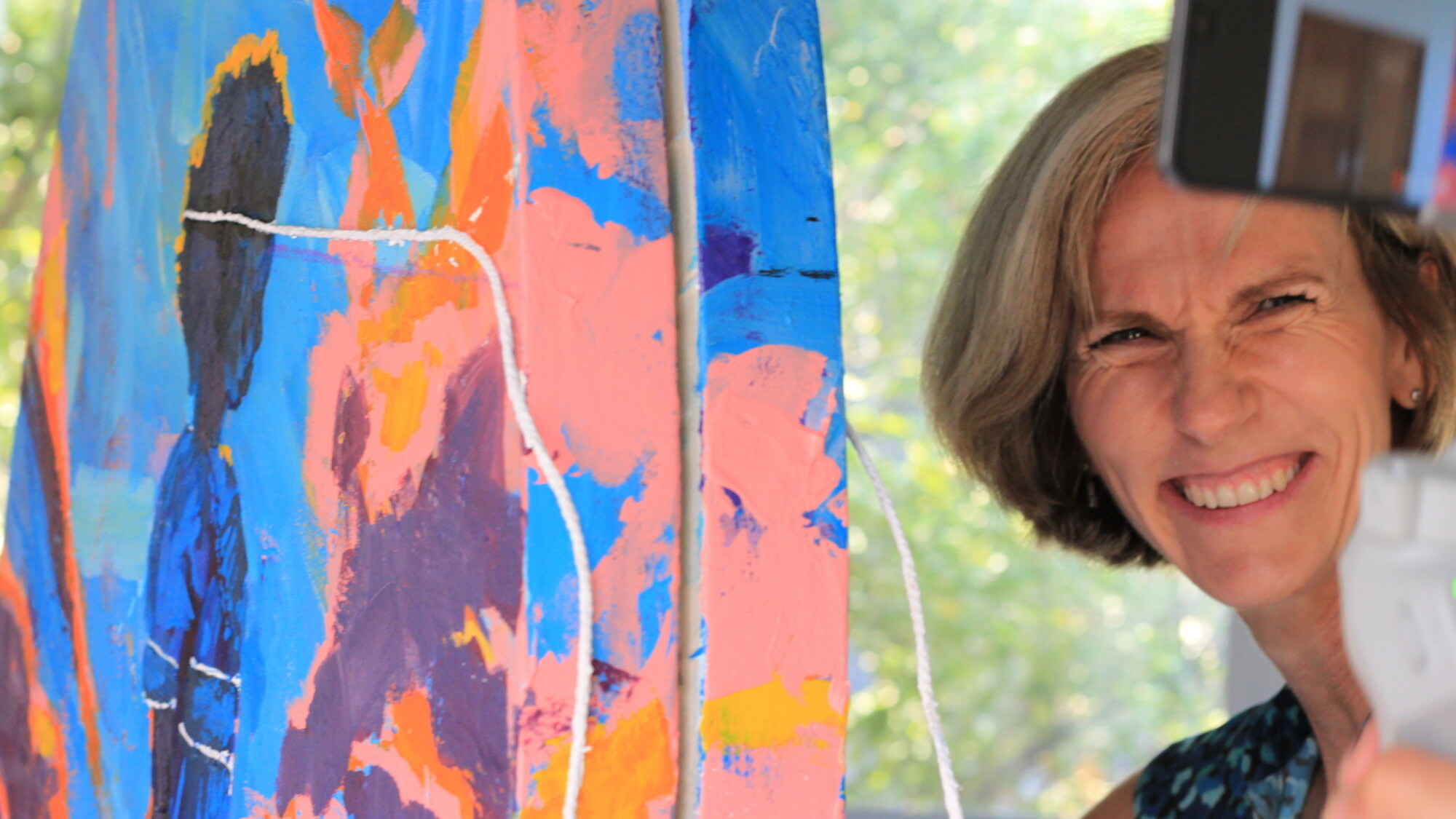
Lucy Blumenthal is a fine art conservator based in Durban, KwaZulu Natal, with an MA in Fine Art Conservation from the University of Northumbria, United Kingdom.